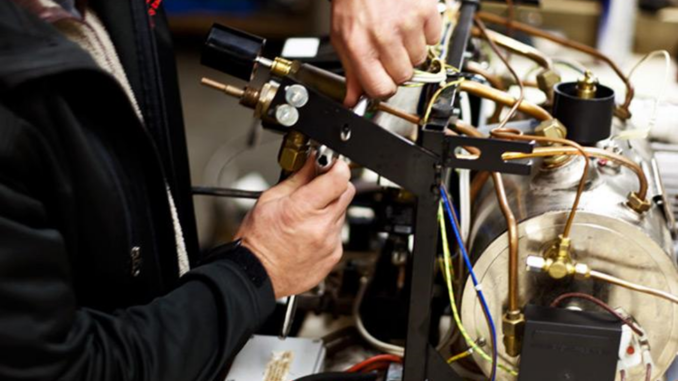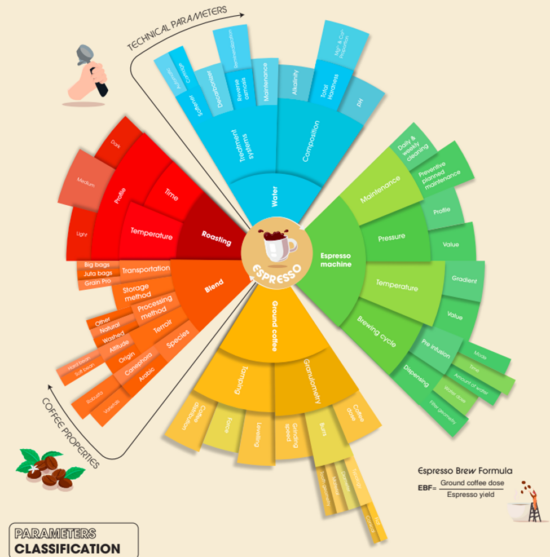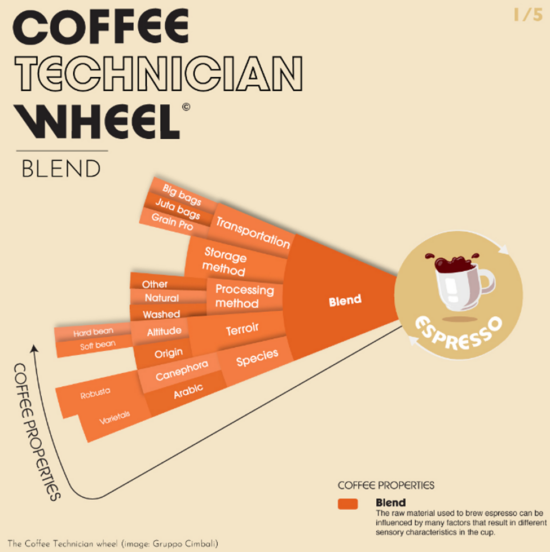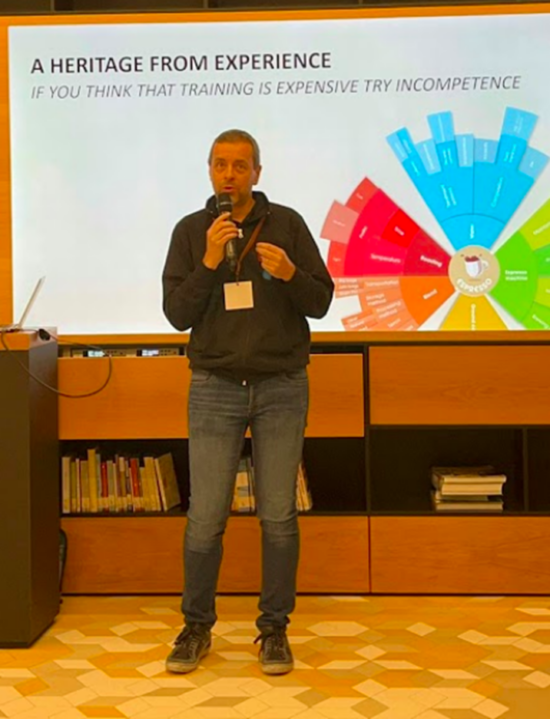
The Coffee Technician Wheel is a new tool that helps technicians understand the complexity of coffee extraction.
BY VASILEIA FANARIOTI
SENIOR ONLINE CORRESPONDENT
Photos courtesy of Edgardo Ferrero and Espresso Academy
Coffee technicians are responsible for a complex set of tasks related to the production and extraction of coffee. They manage customer requests and need to understand the intricate mechanics and electronics of equipment. They must master raw ingredients, and stay up to date on ever-changing trends in the sector. The role of a coffee technician is, in short, demanding and multifaceted.
To help coffee technicians master their trade and bring all parts of the coffee supply chain together, Gruppo Cimbali created the Coffee Technician Wheel. This innovative tool provides an at-a-glance view of all the variables at play during coffee extraction. From flavor development to dose, time, and brew ratio, this wheel makes it easier for technicians to quickly access and analyze information. Today we’ll take a closer look at what the Coffee Technician Wheel can do!

The Purpose of The Coffee Technician Wheel
The Coffee Technician Wheel is divided into two main sections. The first part covers technical parameters, which are external factors that can be changed, such as water, the espresso machine, and the grinder. The second section is the organic properties of coffee—internal factors linked to the type/species of coffee, roasting conditions, and more. These elements cannot be altered, but can be managed to produce optimum results in the cup.
The wheel is divided into four color-coded segments, with each segment covering a particular condition that affects coffee extraction. Each has a pictogram that symbolizes the various stages of the process; these provide a visual reference to help technicians understand the complexity of the different steps.
For example, if we have a light-roasted natural coffee, we can adjust the temperature and pressure of the machine. We can set pre-infusion features and select suitable water. We can grind appropriately to enjoy an excellent cup with controlled acidity and enhanced aroma. Edgardo Ferrero, group services director at Gruppo Cimbali, explains that the goal was to create a tool that would help coffee technicians ensure the best result in the cup, making the most of the coffee’s aroma.

The Inspiration
“We were inspired by the coffee sensory wheel and condensed its concept into a more specific tool for the equipment used to process and extract coffee,“ says Edgardo. “This tool brings awareness, clearly demonstrating how many variables can affect extraction and which ones they are. It can be used like a compass, simplifying the search and correction of variables, or providing correct orientation in order to obtain the desired result.”
Ultimately, the wheel will become a digital tool with a proprietary platform; this platform will be equipped with elements such as in-depth information on the operation and calibration of super-automatic machines. It will also show how to work with other beverage options such as milk, plant-based drinks, hot chocolate, and tea.
A Bridge that Connects the Supply Chain
Beyond helping technicians simply identify and resolve potential problems, the wheel can be used as an educational tool in a classroom. Cimbali hopes to promote an understanding of coffee culture and optimal equipment management. Edgardo presented the wheel during the Coffee Technicians Guild Summit in Italy last November. He emphasized that the more knowledge and understanding is shared within the sector, the greater the advantages for everyone involved.

“It was in this context that we developed the idea of sharing our expertise beyond our partners’ circles, with the largest technical community in the industry and beyond,” Edgardo says. ”The wheel is, indeed, a bridge connecting all parts of the supply chain—from technicians to baristas, roasters, and farmers.”
The Coffee Technician Wheel is meant to be a starting point and will be further improved with updates in the near future. These updates will include an examination of water and its effect on coffee machines and the flavor of the coffee. There will also be a look into the history of espresso machine technology and innovative developments. There will be a comparison between different brewing techniques, illustrating how technical aspects alter sensory experiences. Finally, the update will include an analysis of traditional machine hydraulics and their unique characteristics.
Anyone wishing to get a high-resolution PDF of the Coffee Technician Wheel, or to be informed about future infographics from Gruppo Cimbali, can email technical.news@gruppocimbali.com.
ABOUT THE AUTHOR
Vasileia Fanarioti (she/her) is a senior online correspondent for Barista Magazine, and a freelance copywriter and editor with a primary focus on the coffee niche. She has also been a volunteer copywriter for the I’M NOT A BARISTA NPO, providing content to help educate people about baristas and their work. You can follow her adventures at thewanderingbean.net.


